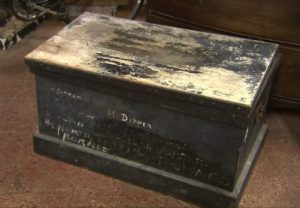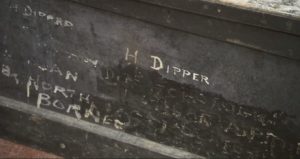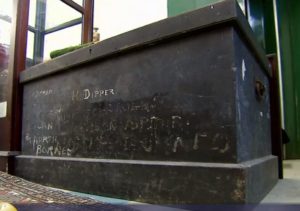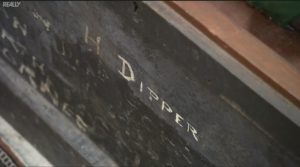A recently repeated episode of the BBC’s Antiques Road Trip (series 20, episode 25, first broadcast on 7 February 2020) featured a glazed Chinese dish, featuring insects such as bees, dragonflies, spiders, beetles and crickets/grasshoppers, as well as a large central wasp spider. It was bought by Natasha Raskin Sharp from an antiques shop in Newark-on-Trent for £50 (haggled down from the ticket price of £69). It caught my eye too: if I’d seen it in an antiques shop, I’d definitely have bought it.
I couldn’t tell from the views shown if it was a transfer decoration that had then been hand-coloured, or if it was entirely hand-painted.
Natasha thought it was likely to date from the 1960s. It had a stamp on the back with Chinese characters.
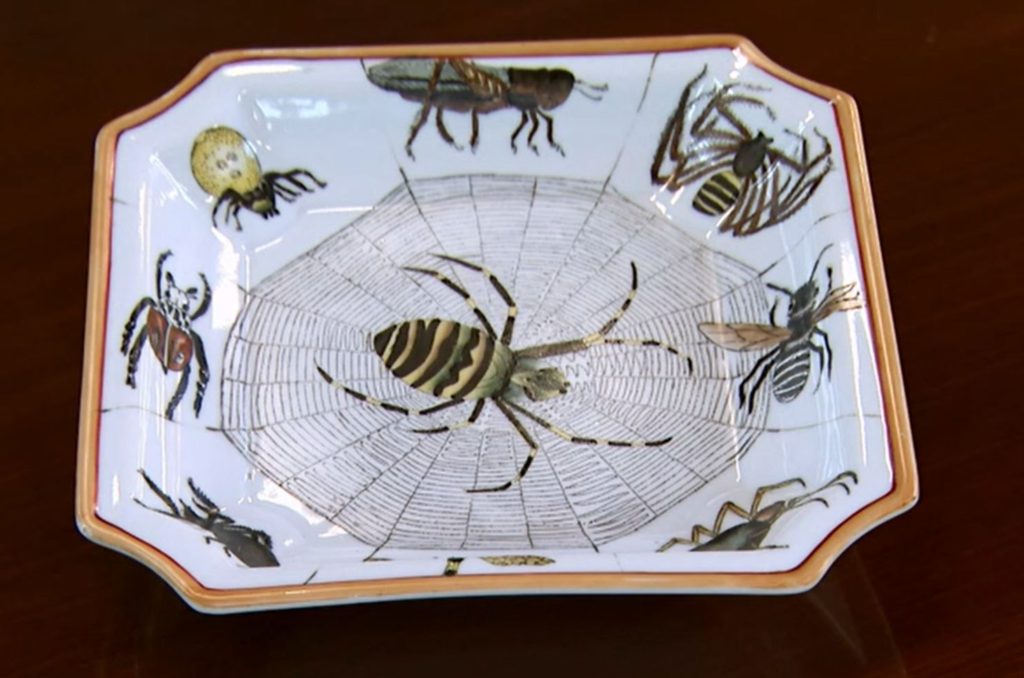
Glazed Chinese dish / plate with hand-coloured insects and spiders, featured on the Antiques Road Trip.
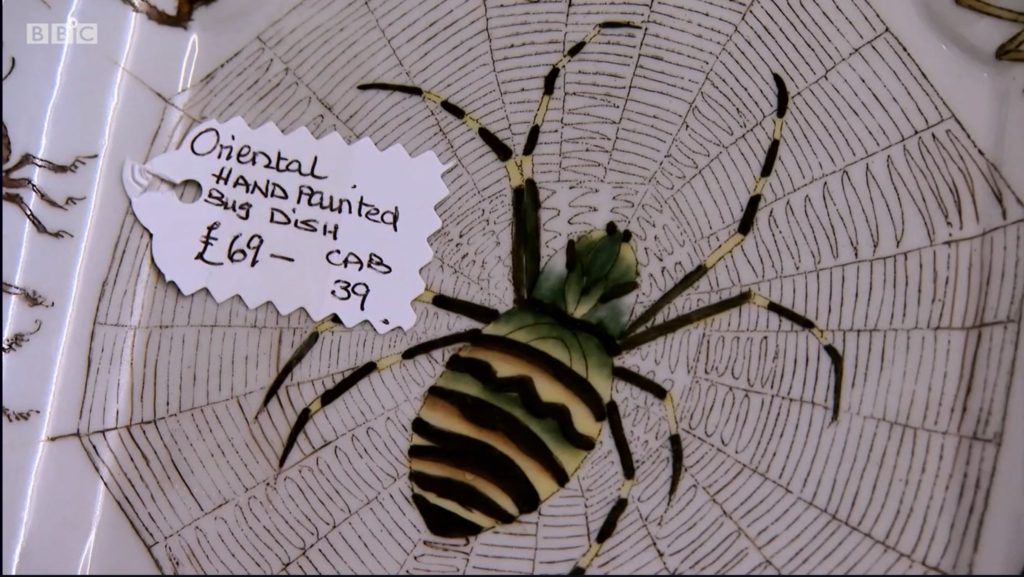
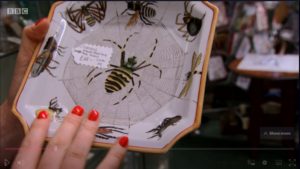
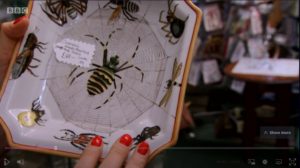
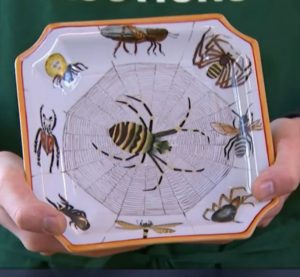
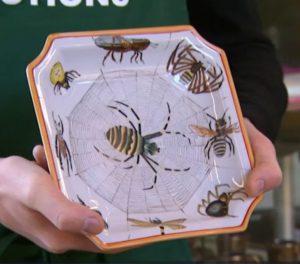
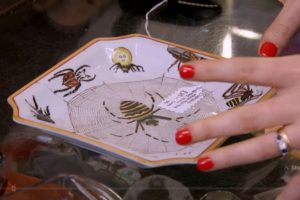
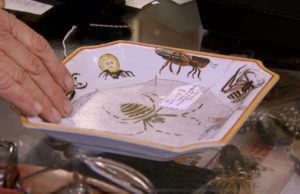
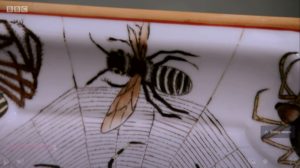
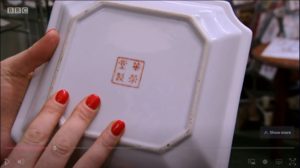
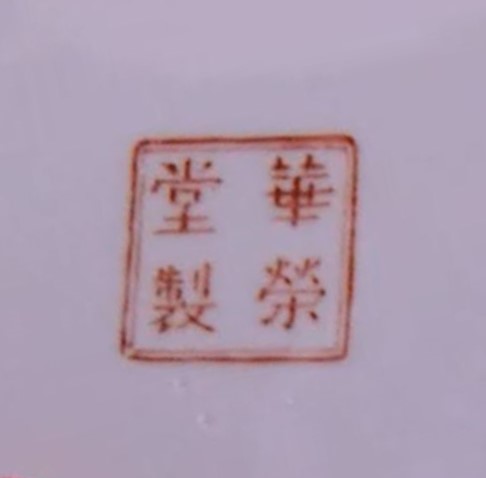
The dish generated a lot of interest at the auction at Willingham Auctions, of Willingham, Cambridgeshire, and sold for £190.
A quick bit of google-fu and I found the dish had sold as Lot 1236 at the Antique and Good Quality Modern and Collectables auction held on 19 October 2019, and that the auction house had described the dish as ‘Entomology interest – Unusual Chinese glazed earthenware plate of canted square form, the hand-finished decoration comprising a large, central female wasp spider in its web surrounded by a variety of other insects, including a locust, hornet, beetles and other arachnids, the base with orange seal mark.’
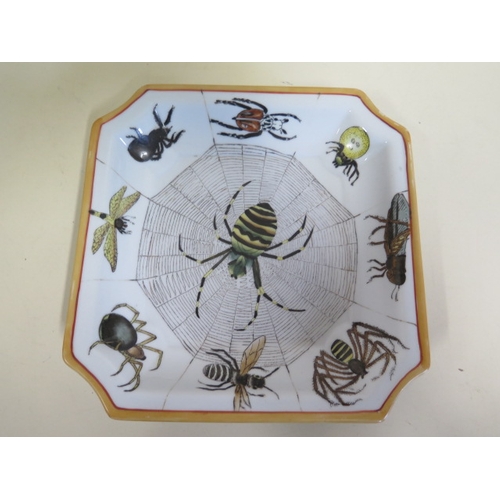
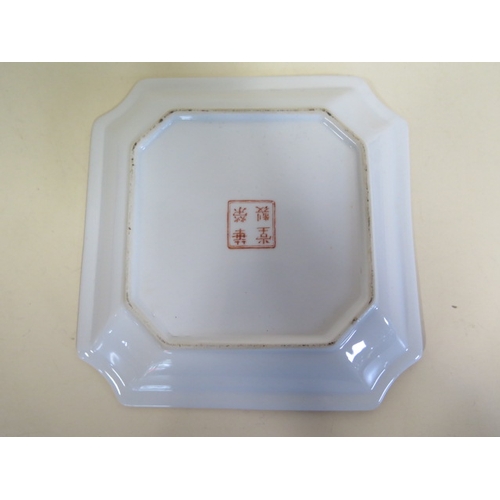
I’d love to know a bit more about this dish, especially its age and who made it. I wonder if it is older than Natasha thought? The auction house made no mention of its presumed date. It feels late nineteenth century to me, but I know diddly squat about Chinese ceramics. Does anyone out there have any knowledge of this intriguing dish? If so, I’d love to hear.
